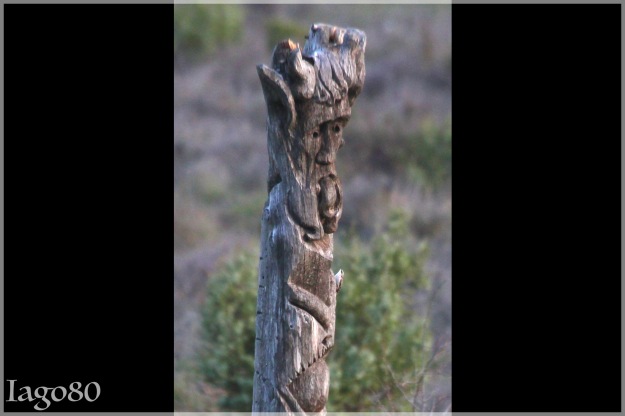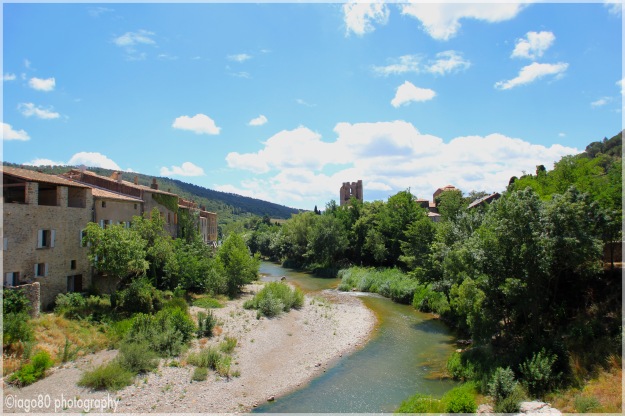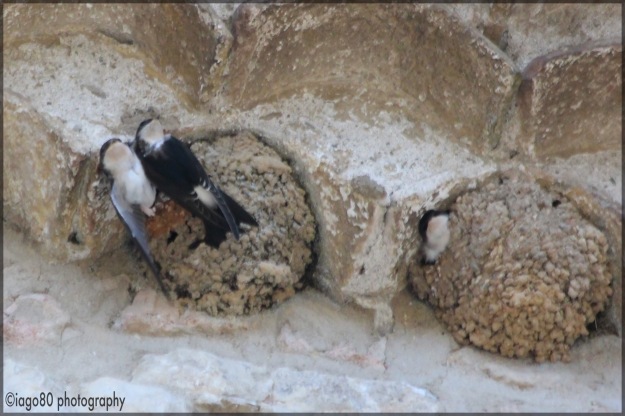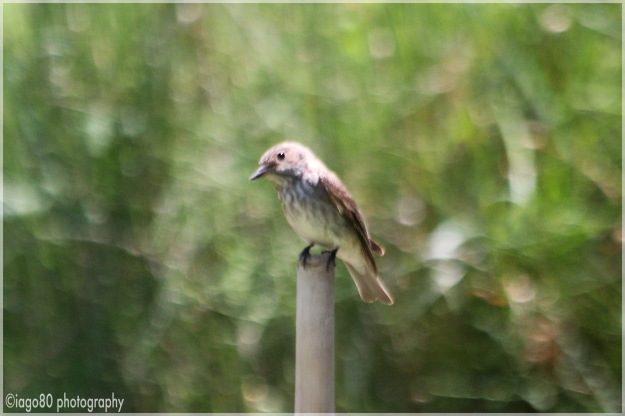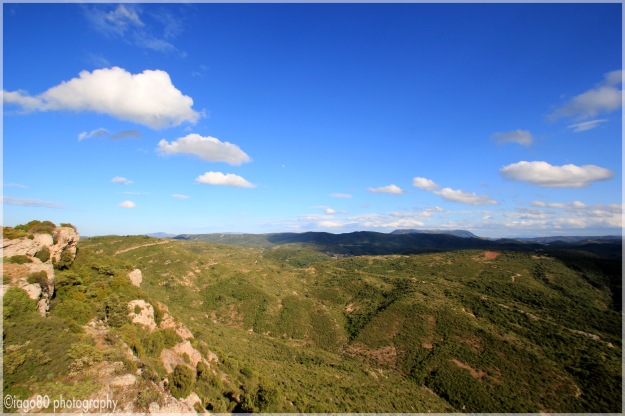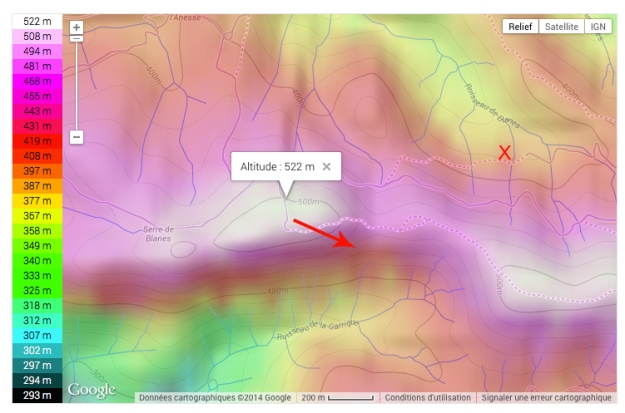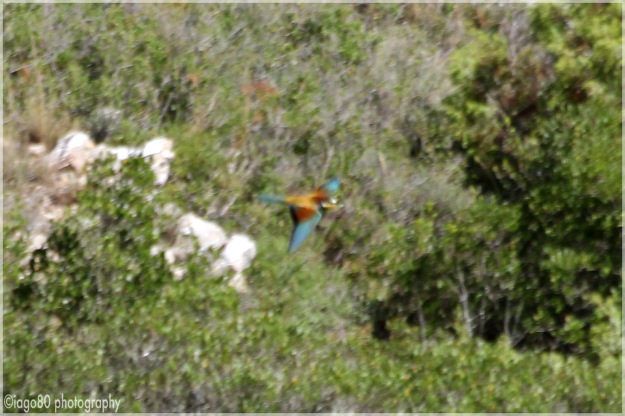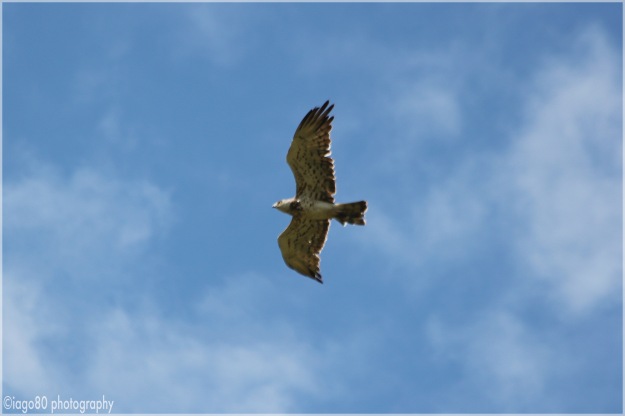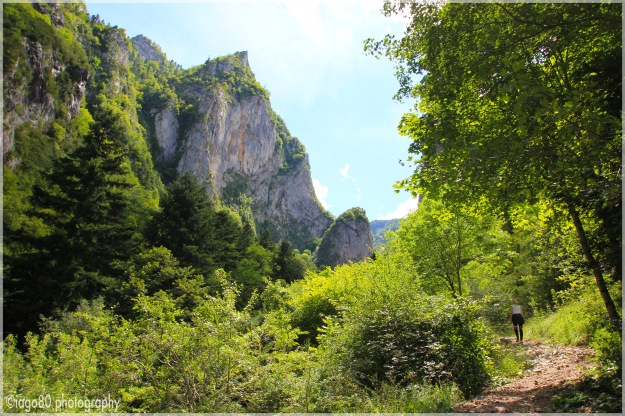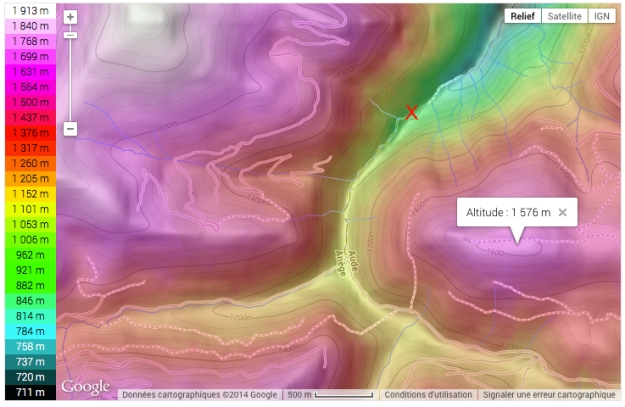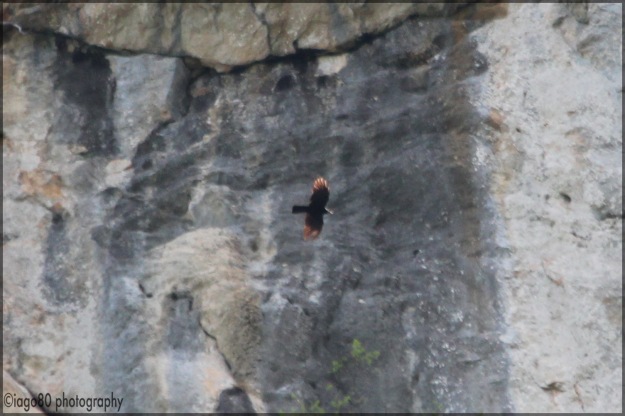No, not Wales. I mean the valleys that make up my second patch in the foothills of the Pyrenees. I often climb our highest hill, Mont Major (about 530m above sea level), and just sit and look over the next valley and further South to the Pyrenees.

200m vertically from me down to the valley floor – a view I have photographed a hundred times
I have sat here and watched Golden Eagles on several occasions, but not this trip. Crag Martins seemed to scrape the rocks (to the right of the photo above) they flew so close in. One afternoon a much bigger shape scythed past me – it was noticeably larger than Common Swift – which I had seen drifting past in small migratory flocks – and the bright white underside showed well. For a life tick I identified it almost immediately: Alpine Swift. Unfortunately, I didn’t really manage to photograph it and only got the back view with a slight showing of the white as it flew hard and fast and south, parallel with my eyeline over the valley and towards the mountains beyond.

Alpine Swift (Tachymarptis melba)
Further down the hillside, there was a lot of noise. I saw a pair of Bee-eaters hawking low over the maquis bushes. They settled back on the same tree time and again. I then realised that there weren’t two, but three, then four, five, eight, and eventually 12 of them all together. They were a long way away and below me, but I managed this photo in which nine Bee-eaters can be seen together.

European Bee-eater (Merops apiaster)
What do you mean you can’t see them?! Treat it like a game of ‘Where’s Wally’ – there really are nine showing in the photo. if you have given up, here is the photo again with each Bee-eater circled, including the four together on the lower-left branch.

12 Bee-eaters together was a European record for me. A record that would be broken just a few days later when 33 flew over our house in a single flock or ‘colony’ – I managed to get all of them in a single frame.

Crossing over the ridge from one valley to the next was another bird hawking for large insects.

Hobby (Falco subbuteo)

At one point another shape flashed out of the trees beside me and straight at the Hobby as if to mob it. I managed to steal a single usable photo of of it as it went over my head. Given the proximity, it had me thinking Goshawk at first, but was actually a large female Sparrowhawk.

Eurasian Sparrowhawk (Accipiter nisus)
Over the week we were there, the number and variety of raptors was poor. I imagine many of the Short-toed Eagle‘s must have flown South already. But the paucity of variety was mitigated by a second patch sighting of Griffon Vulture which flew straight over our house, albeit very high.

Griffon Vulture (Gyps fulvus)
Back down on the land, my wife must get the credit for spotting a bird fly across our path as we went for a walk. It turned out to be another patch tick for me (one of the three this trip, alongside the Alpine Swift and a Western Orphean Warbler): Red-backed Shrike. It obviously enjoyed hunting on the land as I saw it again, along with a second bird a few days later. I have long known that the area is ideal for Shrikes and so am amazed it has taken almost a decade for me to find one two here.

Red-backed Shrike (Lanius collurio)
The wonderful – but at the same time, difficult – thing about my French patch is that I am the only birder. All the birds are self-found in just two or three short trips a year.
So, a three patch-tick trip – not bad. About average actually, although inevitably the number of new species will taper off as my list starts to creep up into respectability. But there was actually another ‘tick’ to be had on this trip. Not a patch tick (sadly), but a full-blown life tick, albeit belatedly…
I had nipped out to the shops for some groceries and drove out a bit beyond the nearest villages – wonderful examples of rural French charm.
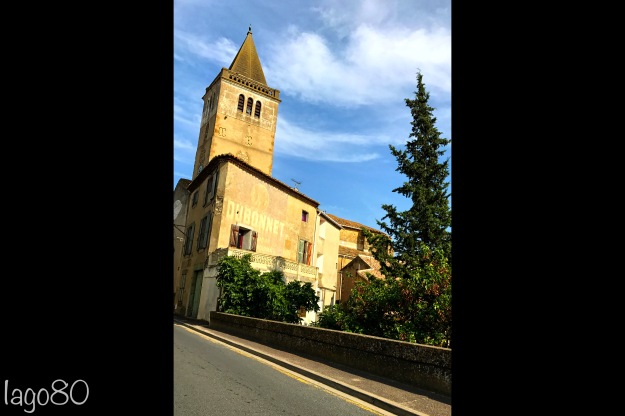
“Dubo, Dubon, Dubonnet” – Saint Laurent-de-la-Cabrerisse
I watched a chattering of Red-billed Chough circle in the sky and then drove on. Through tree-lined roads and fields of French farming… when something caught my eye. Acrobatic flight from narrow-winged raptors low down over the field. A male and female by the look of it. I am used to seeing Hen Harrier on my patch so I didn’t question that they could have been anything else. That was foolish! I pulled over and clicked off a couple of very distant shots from the car and then drove on to get supplies of cheese and wine.
It was only later when reviewing the dreadful quality photos that I realised these weren’t Hen Harrier at all, but Montagu’s Harrier. In the cropped versions of the photos the thin black wing-band can be seen and the extensive black wing-tips stretching down much further on both upper and under side of the wing than we would see with Hen Harrier.

Montagu’s Harrier (Circus pygargus)
These could be birds that have spent the summer here or they could be stopping for food and frolics part-way on a journey south through Europe on their way to Africa. This means I have finally seen all of the European Harriers, having only relatively recently ticked off Pallid Harrier in Norfolk, alongside our Hen Harrier (or what is left of them before grouse-shooting estates make them extinct in England and beyond) and the conservation success story that is Marsh Harrier.
My French Patch list is still small, but it has some cracking birds on it and I feel a real sense of achievement with every new sighting as the sole birder in these remote valleys. After a scorching day in the field, I often sit back in the late afternoon and early evening with a glass of wine, beer, or a gin & tonic looking out over our valley and reflect on what I have seen and how lucky I am to experience it.





